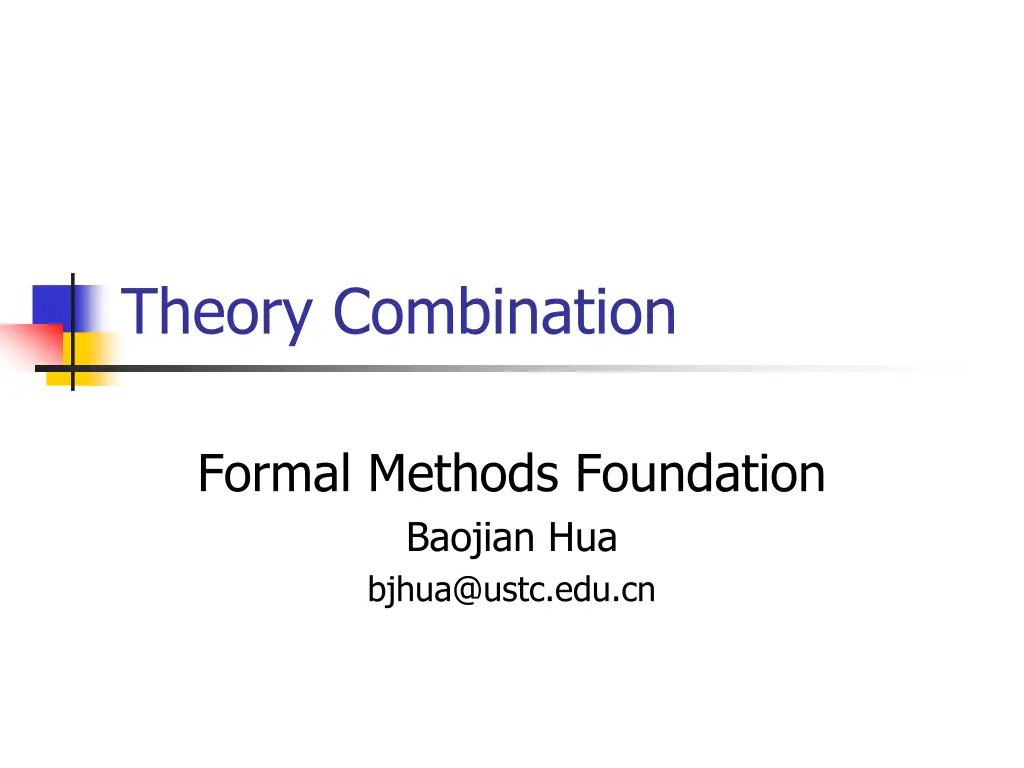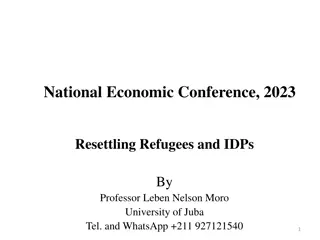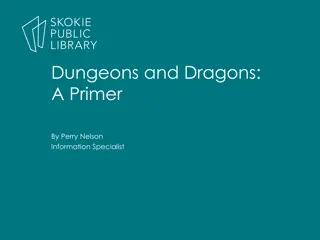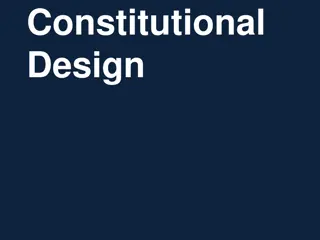
Theory Combination: Decidability and Nelson-Oppen Method
Explore the problem of theory combination, determining if the combination of two or more theories is decidable and the Nelson-Oppen method for simplification. Understand how to approach the theory combination problem using formal methods and the decidable requirements.
Download Presentation

Please find below an Image/Link to download the presentation.
The content on the website is provided AS IS for your information and personal use only. It may not be sold, licensed, or shared on other websites without obtaining consent from the author. If you encounter any issues during the download, it is possible that the publisher has removed the file from their server.
You are allowed to download the files provided on this website for personal or commercial use, subject to the condition that they are used lawfully. All files are the property of their respective owners.
The content on the website is provided AS IS for your information and personal use only. It may not be sold, licensed, or shared on other websites without obtaining consent from the author.
E N D
Presentation Transcript
Theory Combination Formal Methods Foundation Baojian Hua bjhua@ustc.edu.cn
Recall: theories and signatures First-order logic: Syntax, axioms and inference rules Theories: Additional syntactic forms Additional inference rules The signature characterize the theory ?
Weve learned EUF theory, for example: (x1= x2) (f(x2) != x3) LA theory, for example: 3*x1+5*x2 2*x3 x2 4*x4 What about combining EUF and LA? (x2 x1) (x1-x3 x2) (x3 0) f(f(x1) - f(x2)) != f(x3)
And also Bit vectors, for example: a[32] * b[32] = b[32] * a[32] What about combining EUF and BV? f(a[32], b[1]) = f(b[32], a[1]) a[32] = b[32]
And more List, LA, and EUF: (x1 x2) (x2 x1+ car(cons(0,x1))) p(h(x1) h(x2)) ~p(0) Arrays and LA: x = store(v,i,e)[j] y = v[j] x > e x > y Pointers: *(&a+1)=a[1]
Question Given 2 or more theories, whether or not their combination is still decidable? if so, what s the combined decision procedure? This is the problem of theory combination
Theory combination For two theories ?1 and ?2, with signatures 1 and 2, the combined theory ?1 ?2 Signatures 1 2 Union of axioms and inference rules Problem: Does ?1 ?2 ??
Theory combination Approach #1: reduce all theories to propositional logic, and use SAT In previous lectures, we ve seen reductions for various theories, say BV Approach #2: combine theories directly We ll discuss the Nelson-Oppen method Greg Nelson and Derek Oppen, Simplification by cooperating decision procedures, 1979
Basic results The theory combination problem, in general, is undecidable Even the underlying theories are decidable To make it decidable, we require: ?1 and ?2 are decidable 1 2 =? (except for =) infinitely stable
Nelson-Oppen Architecture Conjunctive formulae Purification Nelson-Oppen Equality broadcast Theory 1 Theory 2 Theory n
Nelson-Oppen Step #1: purification Introduce auxiliary variables, so that different theories don t mix Example with LA and EUF: x1 f(x1) x1 t1 t1=f(x1)
#2: Equality propagation After purification, the proposition is turned into P1 P2 ... Pn Each Pibelongs to a specific theory And Piare connected by variables If some Piis UNSAT, return UNSAT If Piimplies an equality ei=ej, add ei=ej to every Pj(j!=i), goto previous step broadcast operation (the key idea)!
Example 1 // The initial proposition: (x2 x1) (x1-x3 x2) (x3 0) f(f(x1) - f(x2)) != f(x3) // After purification: (x2 x1) (x1-x3 x2) (x3 0) f(t1)!= f(x3) t1= t2-t3 t2= f(x1) t3= f(x2)
Example 1, cont LA x2 x1 x1-x3>=x2 x3 0 t1=t2-t3 EUF f(t1) != f(x3) t2=f(x1) t3=f(x2) f(0) != f(0) broadcast x3=0 x1=x2 t2=t3 x3=0 x1=x2 t2=t3 t1=0 t1=0 UNSAT
Example 2 // The initial proposition: (x1 x2) (x2 (x1 + car(cons(0,x1)))) p(h(x1) h(x2)) ~p(0) // After purification: (x1 x2) (x2 x1+t1) p(t2) ~p(t3) t1 = car(cons(t3, x1)) t2 = t4-t5 t4 = h(x1) t5 = h(x2) t3 = 0
Example 2, cont LA x1 x2 x2 x1+t1 t2=t4-t5 t3=0 EUF t4 = h(x1) t5 = h(x2) p(t2) ~p(t3) LIST t1 = car(cons(t3, x1)) t1=t3 x1=x2 t4=t5 t2=t3 t1=t3 x1=x2 t4=t5 t2=t3 t1=t3 x1=x2 t4=t5 t2=t3 UNSAT
Not always so simple // The initial proposition (suppose x ): (x 1) (x 2) P(x) ~P(1) ~P(2) // After purification: LA x 1 x 2 EUF P(x) ~P(1) ~P(2) // Neither theory can imply an equality. // But the proposition is UNSAT!
Theory Convexity A theory ? is convex, if for all conjunctions P, it holds that: P ?=1 ??= ?? P ??= ?? for some i (where n>1). informally: if P implies a disjunction of equality, P must imply one of them A theory ? is called non-convex, if the above condition does not hold ?
Non-convex theory example // The initial proposition (suppose x ): (x 1) (x 2) P(x) ~P(1) ~P(2) // After purification: LA x 1 x 2 EUF P(x) ~P(1) ~P(2) (x 1) (x 2) does not imply either x=1 or x=2 (just one). So we cannot broadcast either equality.
Non-convexity introduces splitting // The initial proposition (suppose x ): (x 1) (x 2) P(x) ~P(1) ~P(2) // After purification: LA EUF x 1 x 2 P(x) ~P(1) ~P(2) State split! x=2 UNSAT x=1 UNSAT x=1 x=2
Nelson-Oppen algorithm nelson_oppen(P){ P1 ... Pn = purify(P); L: if(some Pi is UNSAT) return UNSAT; if(some Pi implies x=y){ broadcast(x=y); goto L; } if(Pi implies x1=y1 xn=yn) nelson_oppen(P, xi=yi); return SAT; }
Soundness and completeness Soundness: if the Nelson-Oppen decision procedure return SAT, the proposition is satisfiable easy to prove Completeness: if the NO procedure returns UNSAT, the proposition is unsatisfiable hard to prove, how do we know the propagation is enough (read the assigned)
Summary Nelson-Oppen is a combined decision procedure for combine theories This method is non-trivial: Equality (EUF) was first studied by Ackerman, 1924 Arithmetic (LA) studied by Fourier, 1826 But EUF+LA only in 1979






















